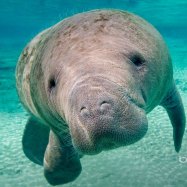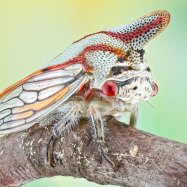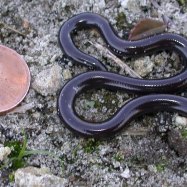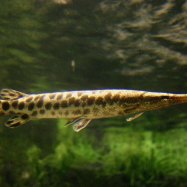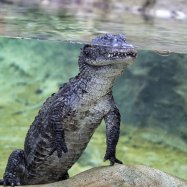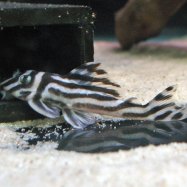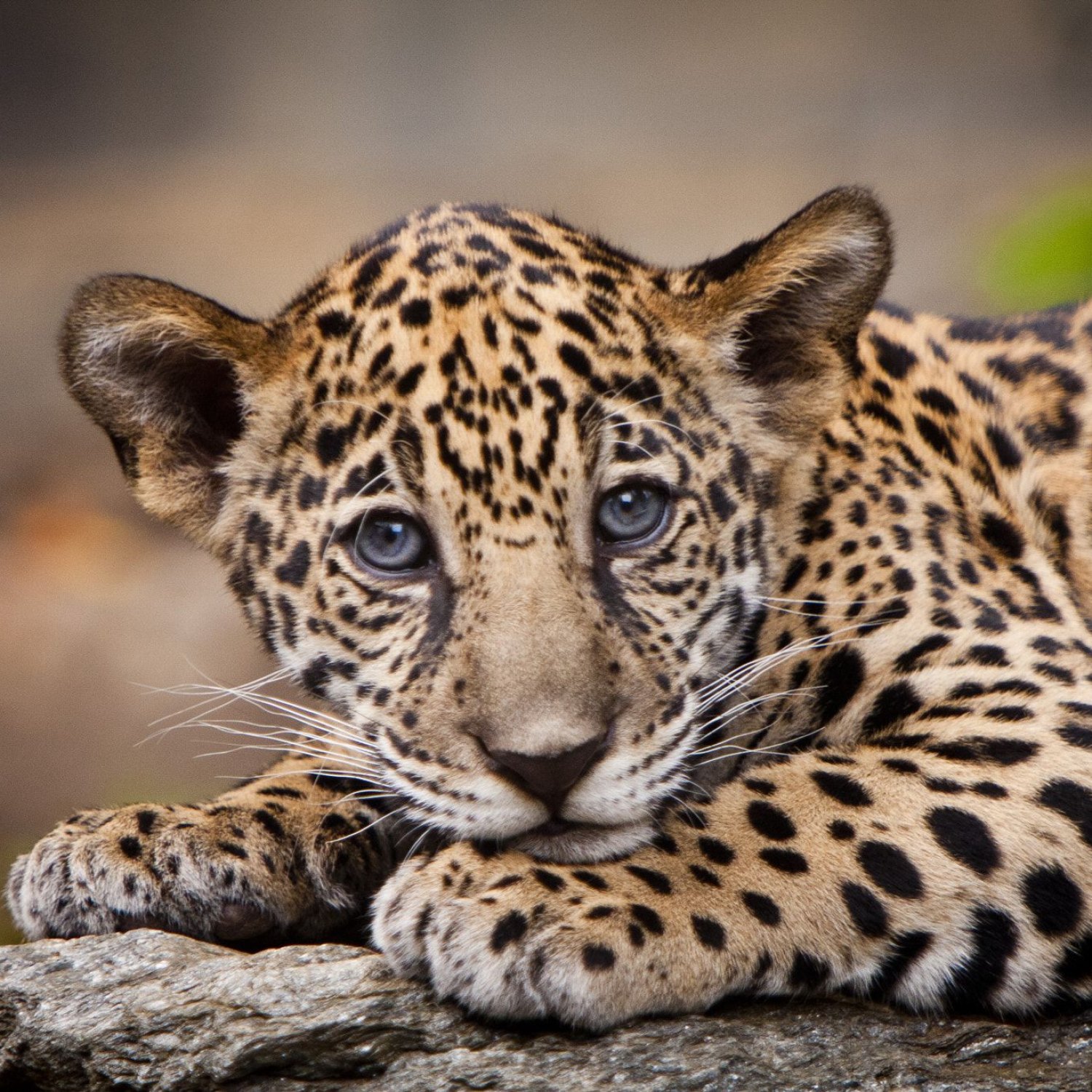
Jaguar
1.2 to 1.9 meters (4 to 6.2 feet)
Discover the fierce and majestic Jaguar, a top predator of the rainforests of Amazon and Pantanal. With a compact and muscular body shape, these animals can grow up to 1.9 meters in length. Learn more about these beautiful creatures from the Felidae family! #Jaguars #Rainforests #Wildlife
Animal Details Summary:
Common Name: Jaguar
Kingdom: Animalia
Habitat: Various habitats like rainforests, swamps, grasslands
The Majestic Jaguar: Exploring the Life and Habits of Latin America's Enigmatic Predator
Have you ever heard the roar of the mighty jaguar echo through the dense rainforests of Latin America? If not, then you are missing out on one of the most awe-inspiring and powerful sounds of the natural world. The jaguar, scientifically known as Panthera onca, is a regal and elusive animal that continues to captivate the imagination and curiosity of people all around the world.From its striking appearance to its formidable abilities, the jaguar is an animal that demands respect and admiration. In this article, we will delve into the depths of this magnificent predator, exploring its habitat, feeding habits, behavior, and more Jaguar. So, buckle up and get ready to embark on a journey into the world of the majestic jaguar.
The Habitat of the Jaguar
The jaguar is a versatile and adaptable animal, capable of thriving in a wide range of environments. These solitary creatures can be found roaming across various habitats in Central and South America, such as rainforests, swamps, and grasslands. They are also known to inhabit mountainous regions and even parts of Arizona in the United States.However, the rainforests of the Amazon and Pantanal are the primary locations where jaguars can be found. These dense and lush forests provide an ideal habitat for these big cats, with an abundance of prey and ample cover for stealthy hunting.
The Feeding Habits of the Jaguar
The jaguar is a carnivorous animal, which means that it feeds solely on other animals. With strong jaws and sharp, retractable claws, they are perfectly designed to hunt and take down their prey. They have a varied diet and can consume over 85 different species of animals, including deer, monkeys, birds, fish, and even caimans Jabiru.The hunting style of jaguars is truly fascinating and has been described as "spectacular and athletic." These elusive predators rely on stealth and speed to catch their prey, often pouncing from a hidden position and delivering a fatal bite to the neck or skull. They are also known for their incredible swimming abilities, and are one of the few big cats that are capable of hunting in the water.
The Geographic Distribution of the Jaguar
As mentioned earlier, jaguars can be found across a large portion of Central and South America. However, their geographic distribution has drastically decreased over the years due to various factors, including deforestation and hunting. Today, they can be found in 18 countries, including Argentina, Brazil, Costa Rica, and Nicaragua.The jaguar's role as a top predator is vital to maintaining the balance and health of the ecosystems they inhabit. Their distribution is crucial in maintaining the biodiversity and overall health of the forests they call home. Unfortunately, their population continues to decline, making them a Near Threatened species on the IUCN Red List.
The Appearance and Body Structure of the Jaguar
One of the most distinctive features of the jaguar is its beautiful coat, which ranges from yellow to tan with distinctive black rosettes. These rosettes are unique to each individual jaguar, allowing researchers and conservationists to identify and track them.Apart from their striking coat pattern, jaguars are also known for their strong and muscular bodies. They have a compact and stocky build, making them incredibly powerful predators. They are also the largest cat in the Americas, with males reaching up to 1.9 meters (6.2 feet) in length and weighing as much as 136 kilograms (300 pounds).
The Behavior of the Jaguar
Jaguars are solitary creatures, and they prefer to hunt and live alone. They are most active at night, making them opportunistic and skilled hunters under the cover of darkness. These big cats are also known to be territorial, with males defending a large area that encompasses the territories of several females.Apart from their solitary and nocturnal nature, jaguars are also incredibly elusive and elusive animals. They are masters of camouflage, blending seamlessly into the dense foliage of their habitat. This makes them challenging to study and track, but also adds to their enigmatic charm.
The Conservation Status of the Jaguar
Despite their adaptability and formidable hunting skills, jaguars are facing numerous threats to their survival. Habitat loss and fragmentation, as well as poaching for their beautiful coats, have significantly decreased their population and geographic range.Conservation efforts and stricter laws have helped to protect and stabilize jaguar populations in certain areas, but their overall status remains precarious. The loss of even a single individual can have a significant impact on the delicate balance of the ecosystem they inhabit.
The Importance of Protecting the Jaguar
The jaguar is not just a beautiful and powerful animal but also plays a crucial role in maintaining the delicate balance of the ecosystems it inhabits. As a top predator, it helps regulate the populations of other species, ensuring a healthy and diverse ecosystem.The conservation of jaguars is not just vital for the survival of this majestic animal, but also for the overall health and well-being of the forests in which they live. Protecting these big cats means protecting the entire ecosystem and all the plant and animal species that depend on it.
The Role of Technology in Jaguar Conservation
One of the most significant challenges in conserving jaguars is their elusive nature and the difficulty in tracking and studying them. However, advancements in technology have helped conservationists in their efforts to protect these animals.For instance, camera traps have proven to be an invaluable tool in monitoring and studying jaguars in their natural habitat. These motion-activated cameras, combined with advanced software and data analysis, can provide vital information on jaguar behavior, movement patterns, and population dynamics.
Furthermore, geographic information systems (GIS) technology has also been crucial in identifying and protecting key jaguar habitats, helping conservationists and governments make informed decisions to preserve these areas.
The Future of the Majestic Jaguar
In the face of numerous threats, the future may seem uncertain for the jaguar. However, efforts are being made by conservationists, governments, and local communities to protect these animals and their habitats. Strict laws and regulations, along with conservation programs and education, are crucial in securing a future for the majestic jaguar.As individuals, we can also play a part in preserving these animals by avoiding consuming products made from jaguar parts and supporting conservation efforts. With the right combination of technology, research, and community involvement, there is hope for the survival of this enigmatic predator.
In Conclusion
The jaguar is a true symbol of power, grace, and adaptability. Its striking appearance, elusive nature, and formidable hunting abilities make it one of the most iconic predators in the world. However, with its population and geographic range constantly decreasing, it is essential to prioritize the conservation of this magnificent animal.Through education, awareness, and the use of technology, we can work towards protecting and preserving the majestic jaguar for generations to come. Let us all join hands and take a step towards securing a future for this incredible animal, before it's too late.

Jaguar
Animal Details Jaguar - Scientific Name: Panthera onca
- Category: Animals J
- Scientific Name: Panthera onca
- Common Name: Jaguar
- Kingdom: Animalia
- Phylum: Chordata
- Class: Mammalia
- Order: Carnivora
- Family: Felidae
- Habitat: Various habitats like rainforests, swamps, grasslands
- Feeding Method: Carnivorous
- Geographical Distribution: Central and South America
- Country of Origin: Latin America
- Location: Rainforests of Amazon and Pantanal
- Animal Coloration: Yellow to tan coat with distinctive black rosettes
- Body Shape: Compact and muscular
- Length: 1.2 to 1.9 meters (4 to 6.2 feet)
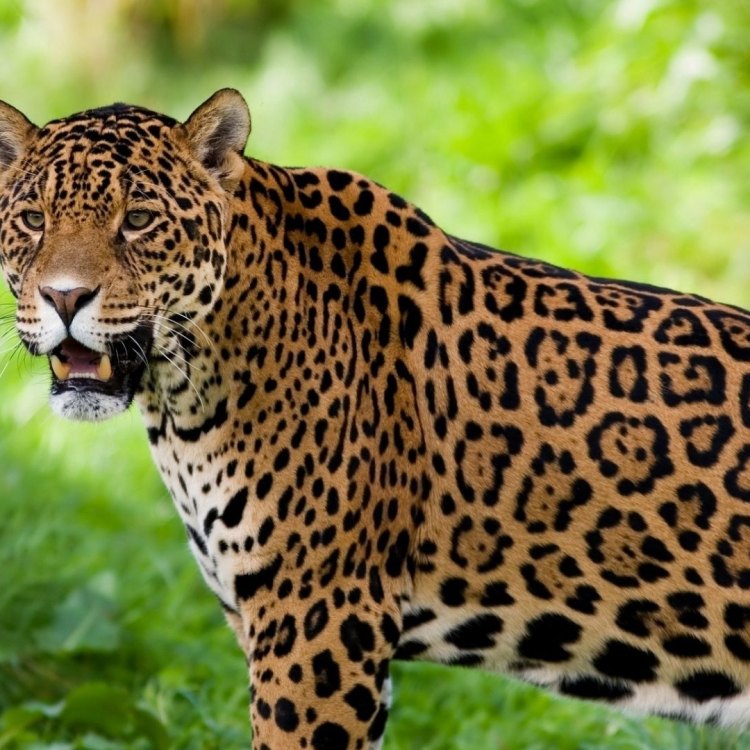
Jaguar
- Adult Size: Large
- Average Lifespan: 12 to 15 years in the wild
- Reproduction: Sexual
- Reproductive Behavior: Polygamous
- Sound or Call: Roaring and growling
- Migration Pattern: Sedentary
- Social Groups: Solitary
- Behavior: Nocturnal and territorial
- Threats: Habitat loss, poaching, and conflict with humans
- Conservation Status: Near Threatened
- Impact on Ecosystem: Top predator and helps regulate prey populations
- Human Use: Hunting for its fur, bones, and teeth
- Distinctive Features: Powerful jaws, strong build, and distinctive coat pattern
- Interesting Facts: Jaguars are strong swimmers and are known for their ability to ambush their prey.
- Predator: Humans
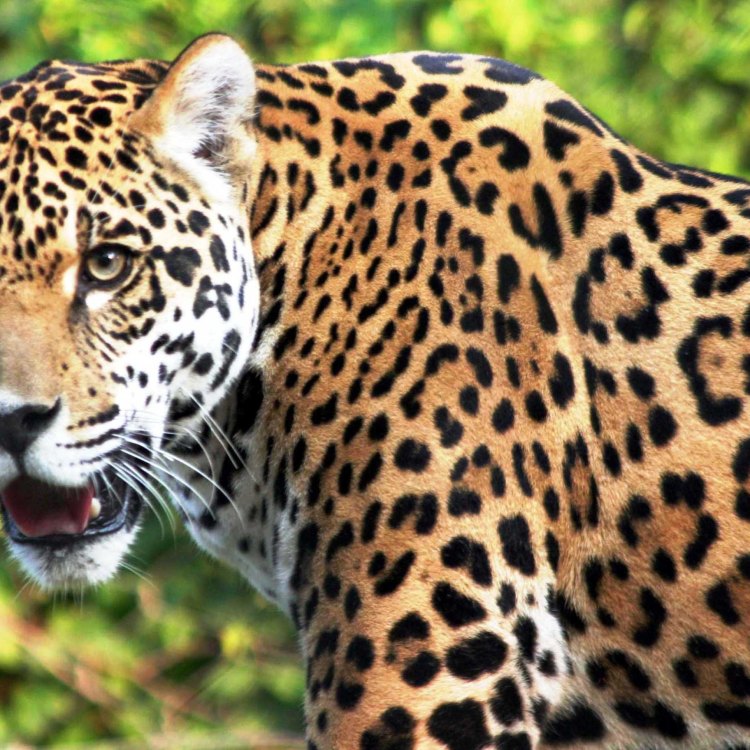
Panthera onca
The Mighty Jaguar: A Magnificent Feline with a Complex Story
The jaguar, also known as the "king of the jungle," is a large and formidable big cat that has captured the hearts of many people with its strong build, distinctive coat pattern, and powerful jaws. It is an animal that has long been revered and admired in various cultures, from the ancient Mayans to the modern-day humans. This magnificent feline has a complex story that goes beyond its fierce reputation and distinctive features. In fact, there is so much more to this elusive creature than meets the eye PeaceOfAnimals.Com.Adult Size and Average Lifespan
One of the first things that come to mind when talking about jaguars is their large size. They are the third largest cat in the world, with males typically weighing between 125 to 250 pounds and females weighing between 100 to 200 pounds. Their muscular build and massive heads give them a powerful and intimidating appearance.
In the wild, jaguars have an average lifespan of 12 to 15 years, but some have been known to live up to 20 years. In captivity, they can live up to 23 years. Their lifespan is affected by various factors, including food availability, habitat quality, and poaching.
Reproduction and Reproductive Behavior
Jaguars are sexual beings and are polygamous, meaning they have multiple mates. Mating usually occurs between January and March, and females give birth to one to four cubs after a gestation period of 93 to 105 days. The cubs stay with their mother for around two years until they become independent Jaguarundi Cat.
What is interesting about jaguars is that they have a rare phenomenon called "delayed implantation." This means that the female can store fertilized eggs in her uterus for several months, delaying the development of the embryo until conditions are suitable for the cubs' survival.
Sound or Call, Migration Pattern, and Social Groups
Jaguars are known for their characteristic roar or growl, which they use to communicate with other jaguars. They also use other vocalizations such as hissing, snarling, and a short cough-like sound. Their calls can be heard up to half a mile away and are used for territorial purposes or to attract mates.
Unlike other big cats, jaguars are not migratory animals. They are sedentary and tend to stay within their home range, which can cover up to 80 square miles. Within this range, they have their preferred hunting grounds and resting areas.
Being solitary animals, jaguars do not form social groups. Each jaguar has its own territory, and the only time they come together is for mating purposes. Their territories may overlap with other jaguars, but they avoid confrontations by marking their territories with urine and claw marks on trees.
Behavior and Threats
Jaguars are a nocturnal species, which means they are most active at night, making them elusive and challenging to study. Their solitary nature and elusive behavior also make them difficult to spot in the wild. During the day, they find a comfortable place to rest, such as a tree branch or a cave.
As top predators, jaguars play a crucial role in the ecosystem. They help regulate prey populations, thus maintaining a healthy balance in their habitat. But they face threats on many fronts, including habitat loss due to deforestation, poaching for their fur, bones, and teeth, and conflict with humans.
Conservation Status and Impact on Ecosystem
The International Union for Conservation of Nature (IUCN) lists jaguars as "Near Threatened" on the Red List of Threatened Species. This status indicates that jaguars are not at an immediate risk of extinction, but their population is declining.
The biggest threat to jaguars is habitat loss. The rapid deforestation of their natural habitat for agricultural purposes has significantly reduced their range and fragmented their populations. This loss of habitat also affects their prey, and jaguars often turn to preying on livestock, resulting in retaliation killings by farmers.
The decline in jaguar populations has a cascading effect on the ecosystem, as they are top predators. When their numbers decrease, there is a surge in the population of herbivores, which can have a detrimental impact on vegetation and disrupt the balance of the ecosystem.
Human Use and Distinctive Features
Despite being an endangered species, jaguars are still hunted for their fur, bones, and teeth. In some cultures, jaguar parts are used for medicinal purposes, and their fur is highly sought after for decorative purposes.
Jaguars have distinct features that set them apart from other big cats. Other than their large size and powerful jaws, they have a unique coat pattern on their fur, which is dotted with black rosettes. This coat pattern helps them blend seamlessly into their surroundings, making them excellent hunters.
Interesting Facts and Predators
Jaguars are known for their exceptional hunting skills, and they have some impressive abilities that make them stand out from other felines. For one, they are strong swimmers and can navigate through water with ease, making them skilled hunters of aquatic creatures. They are also known for their ability to ambush their prey from trees, pouncing on their unsuspecting target with great speed and agility.
Interestingly, humans are the only known predators of jaguars. Humans have hunted jaguars for centuries, whether for self-defense, sport, or to protect their livestock. This conflict between humans and jaguars is a significant threat to their survival and has contributed to the decline in their population.
In Conclusion
The jaguar is a species that evokes both fear and awe in people. Its distinctive features, powerful build, and ferocious reputation make it one of the most captivating creatures in the animal kingdom. But beyond its physical traits, the jaguar has a complex and fascinating story that goes beyond its role as a top predator. It is a story of human interference, habitat loss, and the delicate balance of the ecosystem. As we continue to understand and appreciate the value of these magnificent felines, it is our responsibility to ensure their survival for generations to come.
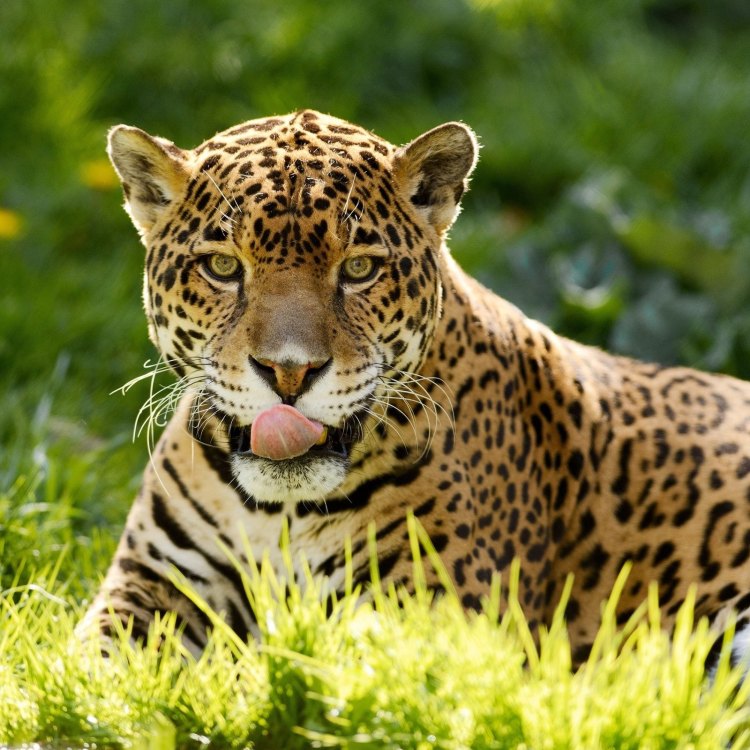
The Majestic Jaguar: Exploring the Life and Habits of Latin America's Enigmatic Predator
Disclaimer: The content provided is for informational purposes only. We cannot guarantee the accuracy of the information on this page 100%. All information provided here may change without prior notice.



